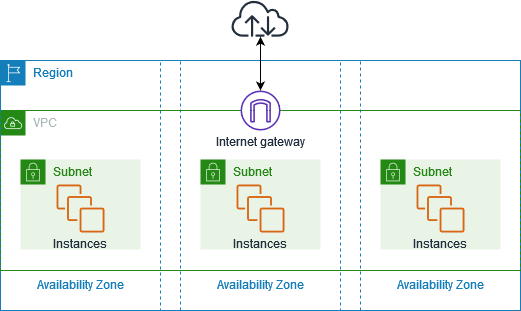How to Handle Foreign Key Errors in SQL When Deleting Rows?
When working with relational databases, understanding foreign key constraints is crucial for maintaining data integrity. If you have a table and want to manage the effects of deleting or updating records regarding foreign key relationships, you might run into errors if the constraints aren’t configured properly. In this article, we will explore how to correctly set up foreign key relations between two tables, and ensure that you receive an error when trying to update or delete from a parent table (like 'Task'), while allowing deletions or updates in child tables (like 'TimeSheet') without errors. Understanding Foreign Key Constraints Relational databases use foreign keys to maintain referential integrity between tables. In your case, the TaskId in the TimeSheet table is a foreign key that references the TaskId in the Task table. This relationship means that every TaskId in TimeSheet must correspond to an existing TaskId in the Task table. Why You Encounter Error 547 Error 547 in SQL indicates that a foreign key constraint has been violated. This can happen in the scenario you described, where you expect to delete or update records in the TimeSheet table without an issue. Here's a probable reason why you are encountering this error even when attempting operations on the child table: Existing References: If there are existing records in TimeSheet that reference the TaskId you are trying to delete from the Task table, the database will prevent that deletion to maintain referential integrity. Null Handling: Even though nulls are allowed in the TaskId column in TimeSheet, SQL still checks for valid existing references. Solution: Setting Up Proper Foreign Key Behavior To ensure that you receive the desired behavior (error when deleting/updating from Task, no error when doing so in TimeSheet), you should: Leave Current Foreign Key Configuration, Ensuring Proper Data Utilize Cascading Options: If you want to allow updates and deletes in the child table without limitations, make sure your foreign key setup is optimal. Here’s how you can do this: SQL Command to Ensure Proper Foreign Key Behavior Here’s how you can set up your foreign key constraint with options: ALTER TABLE TimeSheet ADD CONSTRAINT fk_TimeSheet_TaskId FOREIGN KEY(TaskId) REFERENCES Task (TaskId) ON DELETE NO ACTION ON UPDATE NO ACTION; GO This configuration uses NO ACTION to specify that no deletion or update occurs in the TimeSheet table when the referenced TaskId in Task is being deleted or updated. However, it does allow deletion from TimeSheet if the TaskId doesn't exist or is set to NULL. Example Data and Commands Let's consider some example commands to illustrate this further: Insert Sample Data INSERT INTO Task (TaskId, TaskName) VALUES (1, 'Task 1'); INSERT INTO TimeSheet (TaskId, HoursWorked) VALUES (1, 5); Attempting Deletion in Task DELETE FROM Task WHERE TaskId = 1; -- This should throw an error if the task is referenced by TimeSheet. Attempting Deletion in TimeSheet DELETE FROM TimeSheet WHERE TaskId = 1; -- This should work without error. Frequently Asked Questions Q1: Can I modify the foreign key constraint after creation? A1: Yes, you can drop the current constraint and recreate it with different options as needed. Q2: How can I remove orphaned records in the child table? A2: Consider using a cleanup query that deletes records from TimeSheet where TaskId does not exist in Task. Q3: What if I still encounter errors after adjusting foreign keys? A3: Review the current data for inconsistencies and ensure that all TaskId references in TimeSheet either exist in Task or are set to NULL. Understanding and configuring foreign key constraints correctly is essential for maintaining data integrity across your database. By following the steps outlined, you can effectively manage parent-child table relationships in SQL without encountering unnecessary errors.

When working with relational databases, understanding foreign key constraints is crucial for maintaining data integrity. If you have a table and want to manage the effects of deleting or updating records regarding foreign key relationships, you might run into errors if the constraints aren’t configured properly. In this article, we will explore how to correctly set up foreign key relations between two tables, and ensure that you receive an error when trying to update or delete from a parent table (like 'Task'), while allowing deletions or updates in child tables (like 'TimeSheet') without errors.
Understanding Foreign Key Constraints
Relational databases use foreign keys to maintain referential integrity between tables. In your case, the TaskId in the TimeSheet table is a foreign key that references the TaskId in the Task table. This relationship means that every TaskId in TimeSheet must correspond to an existing TaskId in the Task table.
Why You Encounter Error 547
Error 547 in SQL indicates that a foreign key constraint has been violated. This can happen in the scenario you described, where you expect to delete or update records in the TimeSheet table without an issue. Here's a probable reason why you are encountering this error even when attempting operations on the child table:
-
Existing References: If there are existing records in
TimeSheetthat reference theTaskIdyou are trying to delete from theTasktable, the database will prevent that deletion to maintain referential integrity. -
Null Handling: Even though nulls are allowed in the
TaskIdcolumn inTimeSheet, SQL still checks for valid existing references.
Solution: Setting Up Proper Foreign Key Behavior
To ensure that you receive the desired behavior (error when deleting/updating from Task, no error when doing so in TimeSheet), you should:
- Leave Current Foreign Key Configuration, Ensuring Proper Data
- Utilize Cascading Options: If you want to allow updates and deletes in the child table without limitations, make sure your foreign key setup is optimal. Here’s how you can do this:
SQL Command to Ensure Proper Foreign Key Behavior
Here’s how you can set up your foreign key constraint with options:
ALTER TABLE TimeSheet
ADD CONSTRAINT fk_TimeSheet_TaskId
FOREIGN KEY(TaskId) REFERENCES Task (TaskId)
ON DELETE NO ACTION
ON UPDATE NO ACTION;
GO
This configuration uses NO ACTION to specify that no deletion or update occurs in the TimeSheet table when the referenced TaskId in Task is being deleted or updated. However, it does allow deletion from TimeSheet if the TaskId doesn't exist or is set to NULL.
Example Data and Commands
Let's consider some example commands to illustrate this further:
- Insert Sample Data
INSERT INTO Task (TaskId, TaskName) VALUES (1, 'Task 1');
INSERT INTO TimeSheet (TaskId, HoursWorked) VALUES (1, 5);
- Attempting Deletion in Task
DELETE FROM Task WHERE TaskId = 1;
-- This should throw an error if the task is referenced by TimeSheet.
- Attempting Deletion in TimeSheet
DELETE FROM TimeSheet WHERE TaskId = 1;
-- This should work without error.
Frequently Asked Questions
Q1: Can I modify the foreign key constraint after creation?
A1: Yes, you can drop the current constraint and recreate it with different options as needed.
Q2: How can I remove orphaned records in the child table?
A2: Consider using a cleanup query that deletes records from TimeSheet where TaskId does not exist in Task.
Q3: What if I still encounter errors after adjusting foreign keys?
A3: Review the current data for inconsistencies and ensure that all TaskId references in TimeSheet either exist in Task or are set to NULL.
Understanding and configuring foreign key constraints correctly is essential for maintaining data integrity across your database. By following the steps outlined, you can effectively manage parent-child table relationships in SQL without encountering unnecessary errors.










































































































































































![[The AI Show Episode 146]: Rise of “AI-First” Companies, AI Job Disruption, GPT-4o Update Gets Rolled Back, How Big Consulting Firms Use AI, and Meta AI App](https://www.marketingaiinstitute.com/hubfs/ep%20146%20cover.png)










































































































































































.png?width=1920&height=1920&fit=bounds&quality=70&format=jpg&auto=webp#)































































































_Aleksey_Funtap_Alamy.jpg?width=1280&auto=webp&quality=80&disable=upscale#)
_Sergey_Tarasov_Alamy.jpg?width=1280&auto=webp&quality=80&disable=upscale#)















































































































![Apple Foldable iPhone to Feature New Display Tech, 19% Thinner Panel [Rumor]](https://www.iclarified.com/images/news/97271/97271/97271-640.jpg)
![Apple Developing New Chips for Smart Glasses, Macs, AI Servers [Report]](https://www.iclarified.com/images/news/97269/97269/97269-640.jpg)
![Apple Shares New Mother's Day Ad: 'A Gift for Mom' [Video]](https://www.iclarified.com/images/news/97267/97267/97267-640.jpg)
![Apple Shares Official Trailer for 'Stick' Starring Owen Wilson [Video]](https://www.iclarified.com/images/news/97264/97264/97264-640.jpg)



































































































